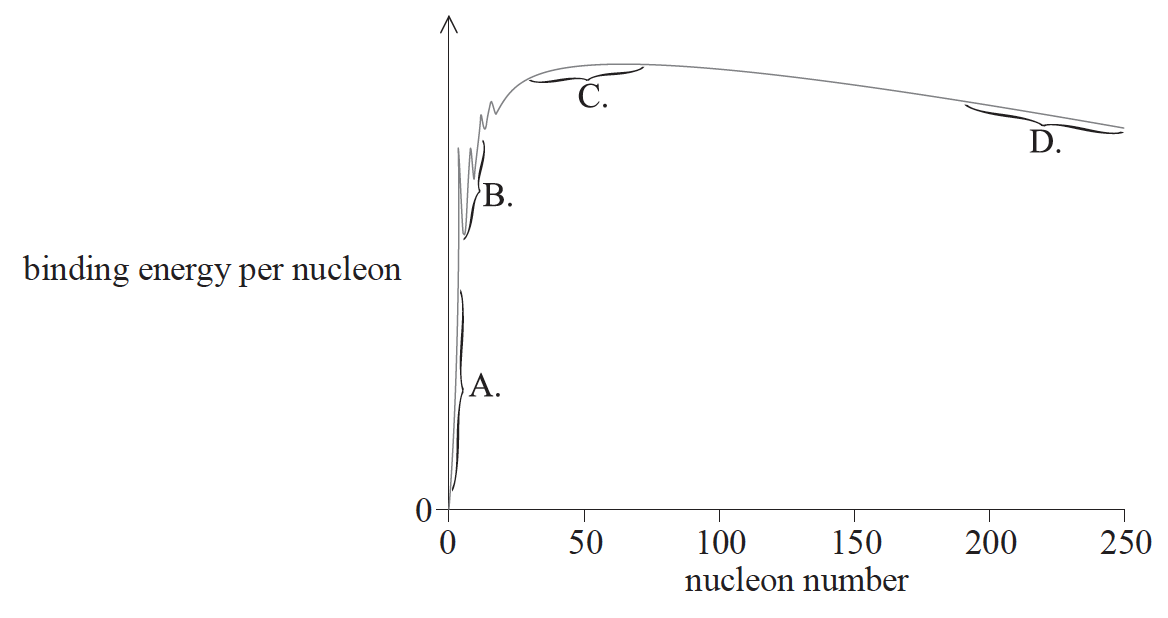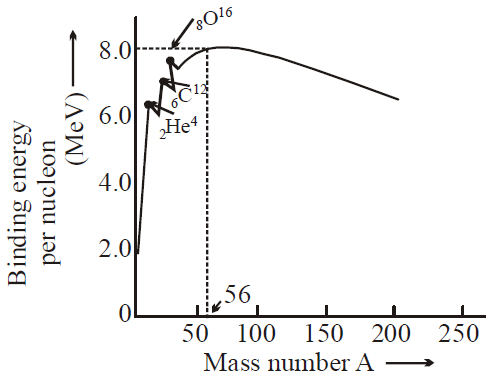Question
A gamma ray can split into an electron and a positron when it passes through certain materials. Which process describes this phenomenon?
A. Pair production
B. Pair annihilation
C. Nuclear fission
D. Radioactive decay
▶️Answer/Explanation
Ans:A

The phenomenon in which a gamma ray can split into an electron and a positron when passing through certain materials is described as “Pair production.” Pair production is a process in which a gamma ray of sufficient energy is converted into an electron and a positron. A fundamental law of mechanics, given by Newton, is that in any process total linear (as well as angular) momentum remains unchanged.
Question
What is the variation of nuclear density \(\rho\) with nucleon number \(A\) ?

▶️Answer/Explanation
Ans:B
The nuclear density (\(\rho\)) in an atomic nucleus generally increases with increasing nucleon number (\(A\)). This relationship is described as a direct or positive correlation. As the number of protons (Z) and neutrons (N) in the nucleus increases, the total nucleon number (A = Z + N) also increases.
The nuclear density can be defined as the mass of the nucleus divided by its volume. Mathematically:
\(\rho = \frac{M}{V}\)
As \(A\) increases, the mass (\(M\)) of the nucleus increases because it contains more protons and neutrons. The volume (\(V\)) of the nucleus remains relatively constant for a wide range of nucleon numbers. Therefore, the increase in mass with increasing \(A\) leads to an increase in nuclear density (\(\rho\)).
So, the nuclear density (\(\rho\)) generally increases with nucleon number (\(A\)) in a positively correlated manner.
Question
The graph shows the relationship between binding energy per nucleon and nucleon number. In which region are nuclei most stable?

Answer/Explanation
Markscheme
C
